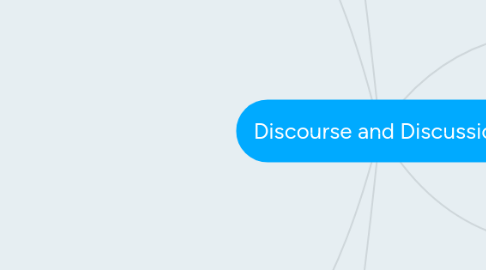
1. Knowledge Construction: students learn by making connections of new information to prior knowledge.
1.1. Provide opportunities to students to process and apply new learning using discourse.
1.1.1. Before knowledge can become useful, students must elaborate and question the new content, examine it in relation to more familiar content, and build new knowledge structures.
1.1.1.1. Otherwise knowledge is not useful for everyday living.
1.2. Active construction of meaning
1.2.1. Each student builds unique representation of what was communicated
1.2.1.1. sometimes learning is incomplete, sometimes it goes beyond expectation because of student experience.
1.2.1.1.1. Different learners construct different sets of meanings and implications of "the same" set of ideas
1.3. Conceptual Change
1.3.1. active instruction involves changing structure through reconstruction and conceptual change.
1.3.1.1. exposing to new ideas alone will not stimulate restructuring.
1.3.1.1.1. Social constructivists emphasize sustained dialogue or discussion in which participants pursue a topic in depth, exchanging views and negotiating meanings and implications as they explore the topic's ramifications.
1.4. Building Content Base
1.4.1. Prior knowledge in S.S. is normally limited and full of misconceptions.
1.4.1.1. Primary-grade teachers are challenged to initiate a beginning knowledge base in the domain.
1.4.1.1.1. Teach as if students know nothing at all about topic
1.5. Narrative Structures as Teaching Tools
1.5.1. This works because even the youngest students are already familiar with narratives through exposure to stories.
1.5.1.1. They use narrative modes of thinking for describing and remembering things that are important to them.
1.5.1.1.1. Stories built around one or a small group of central figures and include attention to goals, strategies, and outcomes.
2. Teaching for Thoughtfulness: challenging students to interpret, analyze, or manipulate information in response to a question or problem that cannot be resolved through previous application of knowledge.
2.1. 6 key indicators of thoughtfulness:
2.1.1. 1. Classroom discourse focuses on sustained examination of a few topics rather than superficial coverage of many.
2.1.1.1. 2. The discourse is characterized by substantive coherence and continuity.
2.1.1.1.1. 3. Students are given sufficient time to think before being required to answer questions.
2.2. Less desirable classrooms:
2.2.1. classrooms that feature lecture
2.2.1.1. recitation
2.2.1.1.1. seat work focused on low-level aspects of the content
2.3. High thoughtfulness classrooms mention critical thinking and problem solving as important goals they focus their lessons on.
2.3.1. cites evidence of good student thinking about content
2.3.1.1. teachers felt more pressure to cover more content, but high thoughtfulness teachers resist and prefer depth over breadth
2.3.1.1.1. unrelated to prior levels of student achievement, meaning teachers can structure thoughtfulness at all achievement levels
2.4. Elementary Grades
2.4.1. engagement is higher during more complex activities
2.4.1.1. Lots of inquiry and discussion
2.4.1.1.1. Conversational approach used
3. Reflective Thought:
3.1. I think it is interesting that discussion is a type of discourse. I never thought of it that way.
3.2. Building prior knowledge is mentioned several times throughout this reading so it is very obvious that it's a vital part of teaching for thoughtfulness.
3.3. I love the suggestions mentioned in the article about essential questions
3.3.1. my favorite is playing devil's advocate. I think this creates such a deep understanding by having to analyze the perspective of another side and furthering the explanation to cover that perspective.
3.4. I also like the use of Think-Pair-Share in a classroom. Discussion among peers is so useful in creating understanding.
3.5. Reconstructing a students misconception can be a difficult task because that is their prior knowledge.
3.6. As usual, narratives are great ways to introduce complex topics to younger students.
3.7. I didn't realize there were so many different forms of discourse
3.8. I hope I take the time to evaluate my classroom on the 6 indicators of thoughtfulness because I know this will ensure my students are learning at a deeper level.
3.9. I can't wait to have discussion with my students in my classroom. I think this is a wonderful way to work on social skills while thinking deeper about content.
4. Using Essential Questions
4.1. Wait Time: period of teacher silence following a question
4.1.1. Increased length of student response
4.1.1.1. more frequent contributions
4.1.1.1.1. increase in logical consistency of explanations
4.2. Think-Pair-Share: Students listen, think, form pairs, and then share with their partner
4.3. Random Calling
4.3.1. abandon habit of only calling on those who raise their hand
4.4. Class Survey
4.4.1. involves entire class in answering questions
4.4.1.1. use hand signals
4.4.1.1.1. small whiteboards
4.5. More than One Answer
4.5.1. Ask open-ended questions
4.6. Probes for thinking and support
4.6.1. key element of Socratic dialogue
4.6.1.1. pushes students thinking and meaning making
4.7. Devil's Advocate
4.7.1. deliberately challenge students to interpret, conclude, or present an alternative viewpoint to press for clarification and justification.
5. Discourse: written or oral communication. Involves students actively constructing knowledge through dialogue with each other and the teacher.
5.1. forms: informal or formal, written or oral, one-way or two-way, small group or whole class
5.2. exchanging ideas through writing or conversation
5.2.1. journal entry with teacher response, posters posted in class, directions for class activity, newsletter to family, etc.
5.2.1.1. Not just words exchanged but tone as well.
6. Discussion: Particular kind of discourse.
6.1. oral; involves sustained exchange of ideas among several participants
6.2. involves students talking and responding to one another and with a teacher
6.3. S.S. discussions should emphasize skills and values needed by citizens in a democracy
6.4. Exchanges of the following:
6.4.1. opinions on issues, supported with evidence, logic, or personal experience
6.4.1.1. agree or disagree
6.4.1.1.1. listen to opposing viewpoints and sometimes change their mind
6.5. 1). It is a dialogue.
6.5.1. 2). It leads to new knowledge or understanding as participants express opinion and listen to those of others.
6.5.1.1. 3). It takes different forms and serves different purposes.
